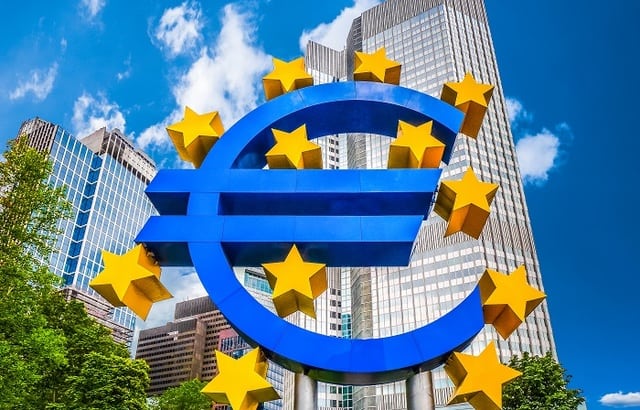The ECB left rates unchanged at Thursday’s policy meeting on the back of subdued inflation driven by a strengthening euro, and against a backdrop of strong economic performance in the bloc.
Draghi said a “very substantial degree” of monetary accommodation is still needed for underlying inflation pressures to gradually build up and support headline inflation developments in the medium term.
He added the bank is prepared to increase asset purchases if the economic outlook becomes less favourable, or if financial conditions become inconsistent with progress towards a sustained adjustment in the path of inflation.
But, as widely expected, Draghi hinted the ECB will wait until its next meeting on 26 October to give more information on the pace of monetary policy beyond December, when the bank’s net asset purchases of €60bn (£55bn) a month are expected to end.
He said the decision would be postponed if the path of inflation was not consistent with its aim of a level at or below 2%.
The bank’s governing council expects interest rates to remain at their present levels for an extended period of time, and well past the horizon of the net asset purchases.
Ian Kernohan, economist at Royal London Asset Management, said with less than four months until the current phase of the ECB asset purchase programme ends, it is time for the bank to taper.
“Inflation is low and the euro has strengthened, however for the first time in many years, economic growth has surprised to the upside this year,” he said. “The time has come to roll back further on the pace of monetary easing, and I would expect a decision at the next ECB meeting to reduce the pace of bond purchases in January.
“We are still a long way from a hike in key interest rates however, and the ECB expects these to remain at their present levels well past the current horizon for quantitative easing.”
Jorgen Kjaersgaard, manager of the Alliance Bernstein European Income Portfolio, said all signals clearly indicate “it’s only a matter of time” before Draghi “pulls the plug” on QE.
“With growth running well above trend and signs that core inflation is on the rise in Europe, expectations are that Draghi will fire the starting gun for QE tapering at the ECB’s October monetary policy meeting,” he said.
However, Kjaersgaard warned volatility in bond prices should be anticipated once the tapering timeline is announced.
He said: “With tapering expected to start early in 2018, QE could be completed as soon as next summer. But waiting for a move from Draghi could prove costly to investors who should start preparing for uneasy European bond markets now.”
David Zahn, head of European fixed income and portfolio manager in the Franklin Templeton Fixed Income Group, also expects an announcement on tapering at the October meeting, but believes bond markets will be relaxed in the meantime.
He said: “After that date, there is only one more scheduled meeting before the QE programme is scheduled to end, and the ECB has generally tended to flag its intentions well in advance.
“We know tapering is eventually coming, but don’t yet know the scale or timetable, so absent any details, we don’t expect bonds to move that much in the aftermath of Thursday’s meeting.
“While we think it would be better to confirm sooner that tapering will begin in 2018 because markets are set up for it, in reality there’s no rush for the ECB to announce its tapering plans.”










